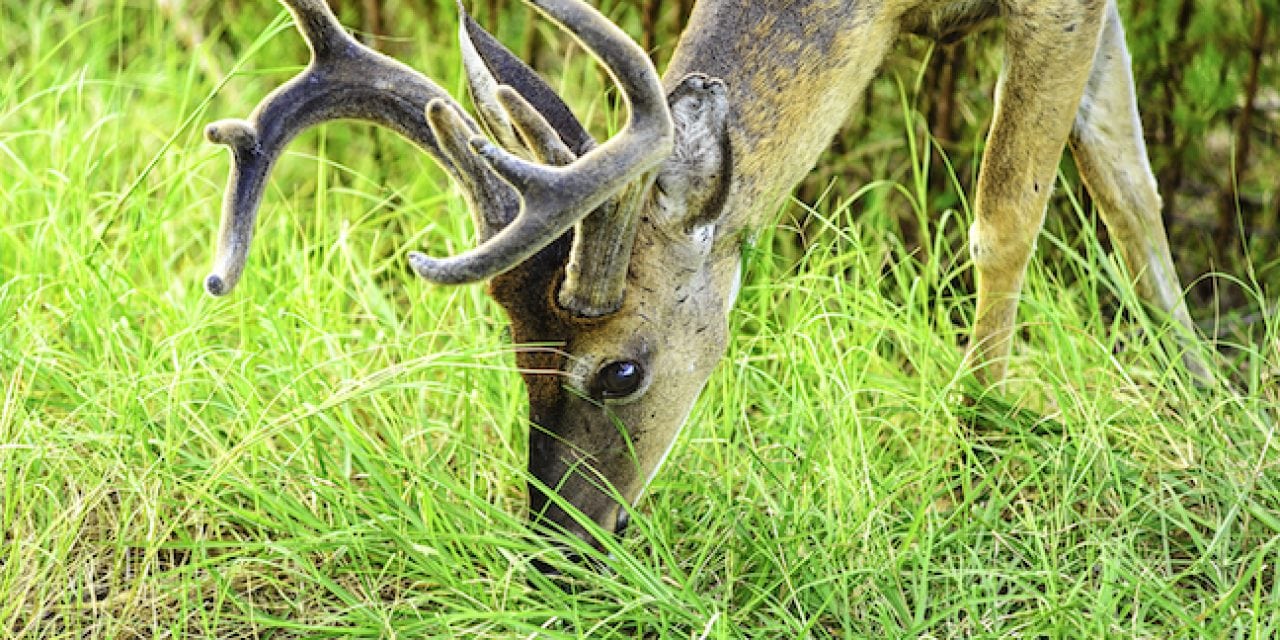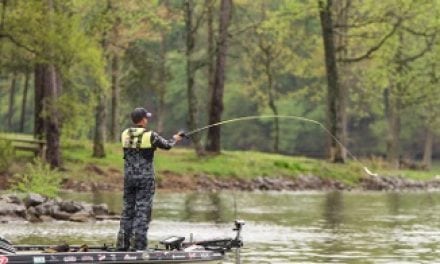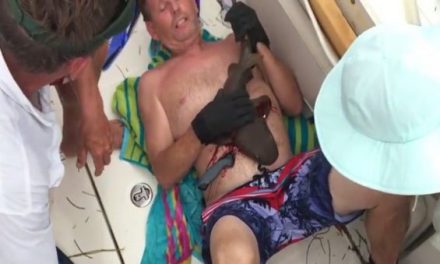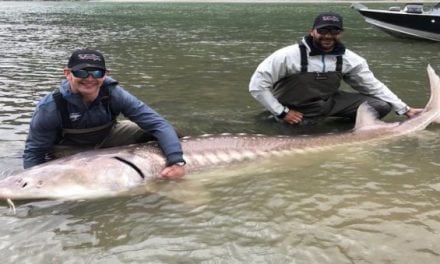It’s a great time for Sunshine State sportsmen and women, as fall hunting and fishing opportunities abound throughout the state.
Surrounded on three sides by water, with habitat ranging from pine forests to cypress swamps to seas of grass, the Sunshine State offers abundant opportunities for sportsmen and women to take many diverse outdoors adventures, particularly in the fall.
Hunters can pursue anything from alligators to quail, while anglers have their pick of freshwater and saltwater species. In addition, anglers might catch several species found nowhere else in the continental United States.
With so many options available for both hunting and fishing, deciding which ones to pursue requires thought.
HUNTING
From the western Panhandle to the peninsula tip, Florida hunters may wander through more than six million acres of public lands, a chunk slightly larger than Vermont, in one of the largest wildlife management area systems in the nation. In addition, three national forests contain about 1.2 million acres, not to mention about 30 national wildlife refuges, many offering hunting opportunities.
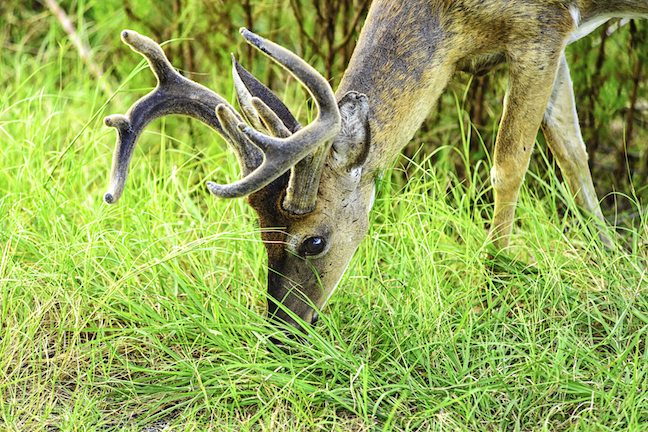
Eight-point buck in St. Andrews State Park, Panama City, Florida. (Shutterstock image)
The Florida Fish and Wildlife Conservation Commission divides the state into four hunting management zones. Zone A covers extreme southern Florida. Zone B mainly includes the area between Orlando and Tampa. Zone C covers lands from northern Palm Beach County to the Georgia line east of Tallahassee.
Zone D includes the western Panhandle. Each zone holds different seasons for various species. In addition, specific wildlife management areas, national forests or refuges might hold hunting seasons that differ from the rest of that zone, so check the regulations for any property before hunting.
Folks can hunt raccoons, rabbits, feral hogs and coyotes all year long, but for most hunters, October means bowhunting for whitetails. Zone A allows deer hunting with modern firearms in September and October. In many places across southern and central Florida, whitetails go into peak rut in October.
Deer Management Zones D1, D2 and C3, which include the western Panhandle and the northwest peninsula from about Gainesville to the Gulf of Mexico, typically produce good deer numbers. Many people hunt the Apalachicola National Forest, which covers 632,890 acres in four Panhandle counties southwest of Tallahassee. This includes the 24,602-acre Bradwell Bay and the 8,090-acre Mud Swamp/New River wilderness areas.
The habitat consists of rolling forested hills, open-canopy savannahs and pine flatwoods, as well as swampy hardwood lowlands along some streams. The forests can produce deer exceeding 200 pounds, but most bucks range about 120 to 140 pounds with 6 to 8 points.
October also means squirrel hunting, with new rules allowing hunters to use dogs to hunt squirrels and rabbits in more areas.
Hunters can find squirrels in just about any forest with hardwood trees or a mix of pines and hardwoods. Many Florida WMAs provide excellent squirrel hunting, particularly ones with swampy lowlands or rivers. Wooded lake shorelines can also offer good squirrel hunting territory.
FRESHWATER FISHING
Florida offers some of the best trophy bass fishing in the nation. From the Panhandle rivers to the legendary waters of Lake Okeechobee, practically every freshwater system in the state can hold giant bass.
Sometimes, the biggest bass live in the smallest places. Some neighborhood retention ponds go largely unfished, but frequently hold massive bass that may eventually die of old age without ever seeing a lure.
Earlier this spring, Dominic Montalto, 19, nearly broke the Florida state record for largemouth bass when he landed a 16.75-pound fish from a small pond in Estero. Montalto’s bass hit a swimbait in a bluegill pattern. Billy O’Berry holds the current record with a 17.25-pounder, which came from a small retention pond in Polk County.
“In October, many anglers come down from other states, frequently just to fish for largemouth bass,” said Paul Thomas, FWC biologist from Lakeland. “In October, bass are getting out of the hot water doldrums and becoming more active. They start feeding more heavily.”
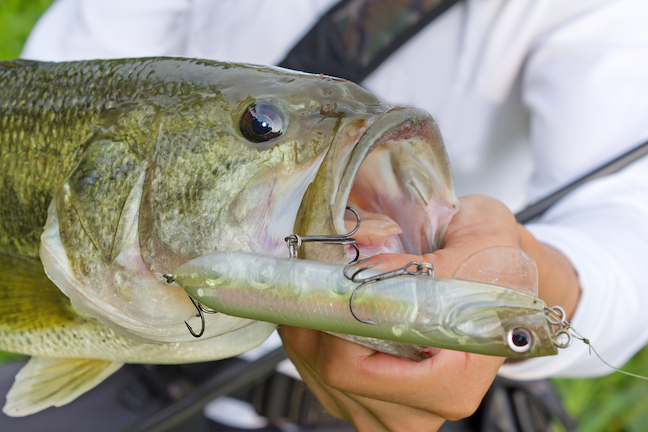
From the Panhandle rivers to the legendary waters of Lake Okeechobee, practically every freshwater system in the state can hold giant bass. (Shutterstock image)
When bass key on shad in the fall, predatory schools push baitfish to the surface and attack them from all sides. When a feeding school erupts within casting range, anglers can find intense action that can put many bass in the boat quickly.
For making long casts at schooling bass, throw lipless crankbaits, chrome spoons, spinnerbaits or walk-the-dog topwaters. Anglers might spot some schooling activity on Seminole Lake northwest of Tallahassee, the Butler Chain of Lakes near Windermere, the Kissimmee Chain, the Conway system in Orange County and Lake Istokpoga in Highlands County.
“I’ve fished for bass all over Florida and I think Conway is the best schooling bass lake in the state,” stated Jim Sweatman, FWC biologist and Fish Orlando Program coordinator. “I’ve never seen bass schooling as much anywhere else as at Conway. One time, a friend and I caught 103 bass in three hours and had some doubles and triples. Some of the best lures for schooling bass are umbrella rigs, swim jigs, flukes and jigging spoons.”
October also means crappie fishing. People without boats might visit one of the Fish Orlando lakes where they can rent one or fish off the banks. These include the Fab Five — Turkey Lake, Starke Lake, Lake Ivanhoe, Lake Underhill and Clear Lake. The state stocks each of these lakes, which can produce impressive fish.
Turkey Lake covers 339 acres in Orlando. The grassy and relatively clear natural lake averages about 5 to 6 feet deep, but some dredge holes dip to nearly 20 feet in depth. The lake can produce bass up to 14 pounds, but it also holds some monster black crappie.
“Turkey Lake has one of the largest average sizes for crappie in the state,” explained Sweatman,. “It’s not a numbers fishery, but a quality fishery. Anglers have a very good chance of catching 12- to 16-inch black crappie. The St. Johns River also has been very good for crappie during the past few years. The section from Lake Monroe near Sanford north to the Palatka area is really good. More known for bass, the Kissimmee Chain can also produce a lot of big crappie.”
In the Orlando (www.myfwc.com/fishing/fishorlando) area, anglers might want to bring the kids to fish some urban park lakes for catfish. Every September, the state stocks about a 1,000 pounds of channel catfish per acre into four urban Orlando park ponds — Barnett Park Frog Pond, Bear Creek Park, Lake Island Park and Lake Santiago. The largest, Bear Creek, covers seven acres.
“October is the perfect month to catch some catfish,” Sweatman noted. “When the water cools, people can easily catch five or six catfish an hour using chicken livers. I recommend fishing near the baited fishing area signs where we bait the catfish to bring them to those areas.”
Another small lake that produces big fish, Webb Lake began because of a highway construction project. When the I-75 builders needed dirt for fill, the state allowed them to dig it out of Fred C. Babcock Cecil M. Webb WMA near Punta Gorda, as long as they built a fishing lake while doing it.
“They built a lake to our specifications designed for fishing,” Thomas remarked. “Webb Lake covers 395 acres in Charlotte County. It has bass, crappie, panfish and channel catfish in it. An old creek runs down the middle of it. We put some structure in there. Over time, it became a much better fishing lake.”
SALTWATER FISHING
In the fall, saltwater fishing revolves around the “mullet run.” Two mullet species live in the state. Striped mullets thrive throughout Florida. They may grow longer than 19 inches and weigh several pounds.
More abundant on the East Coast, especially in southeastern Florida, white mullets don’t grow quite as large and typically weigh less than 1 pound, but some reach 3 pounds. Rich in oil and protein, both species live in brackish coastal estuaries, where they make excellent forage and bait for predators.
Striped mullets spawn in the fall. As water temperatures cools, they make their “run” offshore, perhaps much as 40 to 50 miles from the beach. White mullets do the same thing, only in the spring. The mullet run varies by location. In the fall, it starts in the Panhandle and the northeast Florida coast. As temperatures cool, the mullet run gradually moves southward.
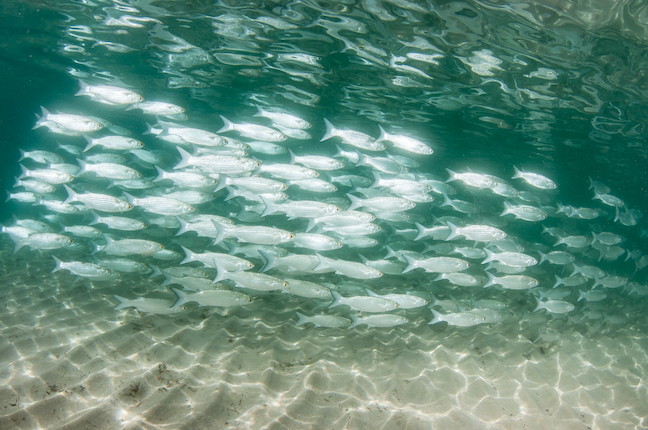
In the fall, saltwater fishing in Florida revolves around the “mullet run.” (Shutterstock image)
“The fall mullet run usually starts from late August to October in this area,” advised Jill Christoferson, FWC biological scientist in Jacksonville. “Pretty much anything that eats a mullet will be following the run. That includes, but not limited to, seatrout, flounder, tarpon, redfish, kingfish and sharks.”
When the mullets begin their run offshore it kicks off a feeding frenzy with practically every meat-eater in the air and sea gathering its share of the bounty. Large fish-eating birds dive on mullets, which could indicate feeding activity by king mackerel, tarpon and other species. Quite frequently, very large fish come close to shore, giving anglers without access to boats opportunities to catch big game fish.
“The mullet run often happens in October,” Sweatman said. “The mullet run is my favorite time to go surf fishing. That will bring tarpon, snook, sharks — all kinds of fish to the surf. When the mullets are running, people can catch as many bluefish and Spanish mackerel as they want. When snook blow up on a pod of mullet, I like to throw a big topwater chugger right by the trough.”
During a mullet run, anglers can catch many different fish species by using live mullets or other baitfish. For smaller fish, like bluefish and Spanish mackerel, use live mullet about 4 to 6 inches long. For tarpon, big sharks or king mackerel, use mullets in the 8- to 12-inch range.
Anglers can also use cutbaits. Ladyfish chunks make excellent temptations for many species, including speckled trout. Strip baits work extremely well. Filet a ladyfish, mullet or other baitfish and insert the hook in the ribcage area. Fish a strip above a weight so the meat undulates in the currents off the bottom. Spoons and other artificials can also work.
Just about any inlet or estuary along either coast can produce a good fall mullet run. On the Atlantic side, try the St. Johns River delta near Jacksonville, Sebastian Inlet, Ponce Inlet and Fort Pierce. In the Panhandle and lower Gulf Coast, try Pensacola, Destin, Panama City, Port St. Joe, Apalachicola, Tampa Bay, Charlotte Harbor and Sarasota. Anglers never quite know when a mullet run might begin in their area.
Anywhere in Florida, sportsmen can find excellent opportunities for outdoors activities. In many places, they can even combine hunting and fishing for a cast-and-blast adventure.
The post Fall Hunting and Fishing in Florida appeared first on Game & Fish.


